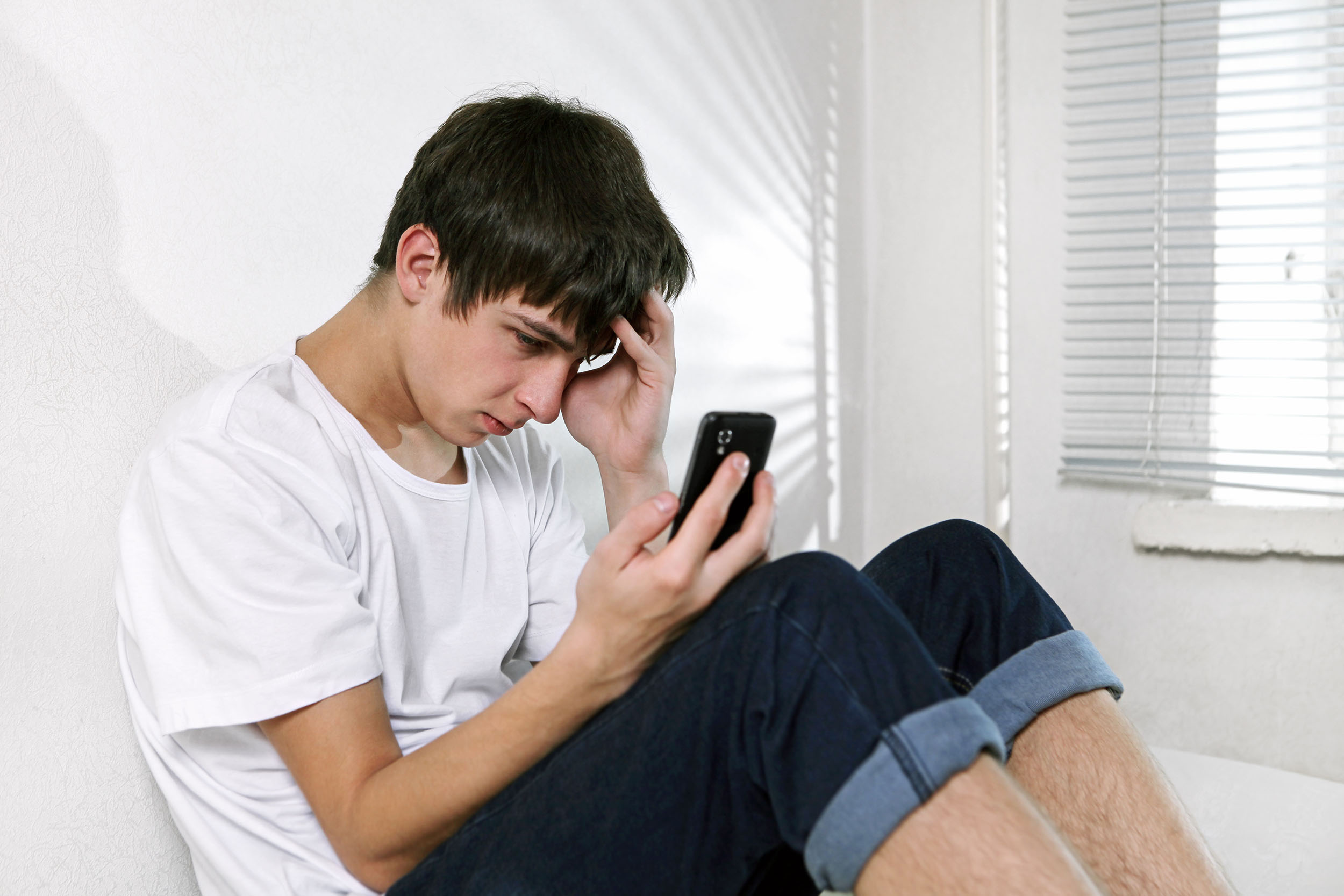An increasing percentage of teens are suffering from a variety of different forms of anxiety, and it’s preventing them from going to school, or even leaving their bedrooms.


An increasing percentage of teens are suffering from a variety of different forms of anxiety, and it’s preventing them from going to school, or even leaving their bedrooms.
Experts told The New York Times that the situation, highlighted by college surveys and other statistics, is steadily getting worse and is likely tied to the use of social media, and efforts by some schools to help overly anxious students deal with their issues are actually counterproductive.
Others point to a broader cultural shift in America that’s replaced the community’s role of intentionally forming good character in teens with a focus on the individual, often leaving young adults looking to social media to craft their own sense of self.
The Times featured one student from North Carolina identified only as Jake, who excelled in Advanced Placement classes, participated in cross-country, and took part in the Model United Nations before his mother said he seemingly “ran 150 miles per hour into a brick wall.”
Jake turned from a normal 17-year-old junior into a literal ball of fear, crying in the fetal positon on the floor and refusing to go to school.
“I just can’t take it!” he screamed. “You just don’t understand!”
Jake explained his anxiety to The Times.
“You know how a normal person might have their stomach lurch if they walk into a classroom and there’s a pop quiz?” he said. “Well, I basically started having that feeling all the time.”
Jake certainly isn’t alone.
“Over the last decade, anxiety has overtaken depression as the most common reason college students seek counseling services. In its annual survey of students, the American College Health Association found a significant increase—to 62 percent in 2016 from 50 percent in 2011—of undergraduates reporting ‘overwhelming anxiety’ in the previous year,” The Times reports.
“Surveys that look at symptoms related to anxiety are also telling. In 1985, the Higher Education Research Institute at UCLA began asking incoming college freshmen if they ‘felt overwhelmed by all I had to do’ during the previous year. In 1985, 18 percent said they did. By 2010, that number increased to 29 percent. Last year, it surged to 41 percent,” according to the news site.
“Those numbers—combined with a doubling of hospital admissions for suicidal teenagers over the last 10 years, with the highest rates occurring soon after they return to school each fall—come as little surprise to high school administrators across the country, who increasingly report a glut of anxious, overwhelmed students.”
The anxiety problems are hitting students from a variety of backgrounds, with poorer students concerned about their personal safety in bad neighborhoods and abusive households, and more affluent students consumed with perfection and expectations of getting into a top college.
Other students suffer from obsessive-compulsive disorders, fear of terrorism, or family conflicts.
One common denominator, however, seems to be social media.
The Times reports:
Anxious kids certainly existed before Instagram, but many of the parents I spoke to worried that their kids’ digital habits—round-the-clock responding to texts, posting to social media, obsessively following the filtered exploits of peers—were partly to blame for their children’s struggles. To my surprise, anxious teenagers tended to agree. At Mountain Valley (treatment center in New Hampshire), I listened as a college student went on a philosophical rant about his generation’s relationship to social media. “I don’t think we realize how much it’s affecting our moods and personalities,” he said. “Social media is a tool, but it’s become this thing that we can’t live without but that’s making us crazy.”
Jean Twinge, psychology professor at San Diego State University, told The Times she was initially skeptical that internet use played a role in the rise of teen anxiety, but reams of research seem to support the notion.
“The use of social media and smartphones look culpable for the increase in teen mental-health issues,” she said. “It’s enough for an arrest—and as we get more data, it might be enough for a conviction.”
Meanwhile, schools are struggling to address a raft of anxious teens in several different ways, though some experts believe efforts to make life easier for them are likely contributing to the problem.
Lynn Lyons, a psychotherapist and author who works with teachers and counselors, pointed to policies that segregate anxious students from uncomfortable situations during a presentation at Fall Mountain Regional High School last fall.
“Anxiety is all about the avoidance of uncertainty and discomfort,” she said. “When we play along, we don’t help kids learn to cope or problem-solve in the face of unexpected events.”
Special educational plans for anxious students that allow them more time for tests, or to enter school through the back door to avoid the melee of other students, for example, aren’t helping.
“If anxiety could talk, it would say, ‘You know, let’s just get out of here. We don’t have to do this!'” Lyons said. “But in order to retrain the brain, in order to create that message that says that even though I’m uncomfortable I can do this, we need to stop treating these anxious kids like they’re so frail, like they can’t handle things.”
It’s a similar situation in college, she said, where students are offered “safe spaces” or shielded from ideas they might find offensive.
“Kids are being given some really dangerous messages these days about the fact that they can’t handle being triggered, that they shouldn’t have to bear witness to anything that makes them uncomfortable and that their external environments should bend to and accommodate their needs,” Lyons told The Times.
Much of the problem stems from a cultural shift that has taken the focus away from the role of society and community in developing strong character and replaced it with a focus on the individual without the broader context, Joseph Davis, at the Institute for Advanced Studies in Culture, wrote in the The Hedgehog Review.
“The circumstances under which children are raised and socialized have changed profoundly over the past half century, as has the experience of growing up. These changes, spurred by far-reaching social and demographic changes, are broadly familiar, at least with respect to the middle class,” Davis wrote. “They include the decline of relatively stable and uniform patterns of child rearing and the increased prevalence of permissive and consensus-orientated rules for children. The complications of such a changed social reality cannot be negligible factors in the struggles of today’s youth.
“But the focus on faulty thinking, self-absorption, and other explanations that locate the problem at the individual level divert attention away from the role of families, communities, and institutions,” Davis wrote. “Even discussions of the competitive environment and achievement orientation of certain high schools and colleges lead back to the idea that student problems arise from a misreading of pressure and disappointment.”
Davis explained that without institutions or communities that intentionally work to form good character, students are left to develop their sense of self on their own, and most turn to social media to help them along.
“Social media like Facebook are precisely designed to facilitate these self-representations by providing access to the range of possibilities such self-making depends on. That is one reason young people become so engrossed in and dependent on them,” he wrote.
The situation leaves youngsters vulnerable to the real world, and that explains why many students eventually seek out counseling or mental health services, according to Davis.
“The challenges that real life inevitably poses to the precariously constructed self result in both a need for constant vigilance and a growing reliance on therapeutic assistance,” Davis wrote. “Ironically—we might even say tragically—young people say that much of what they get from mental-health treatment is professional reassurance that their personal struggles, whether with grades or breakups or motivation, require little, if any, meaningful re-evaluation of how they became so vulnerable.
“Such a re-evaluation would, in any case, be unthinkable to many young people.”